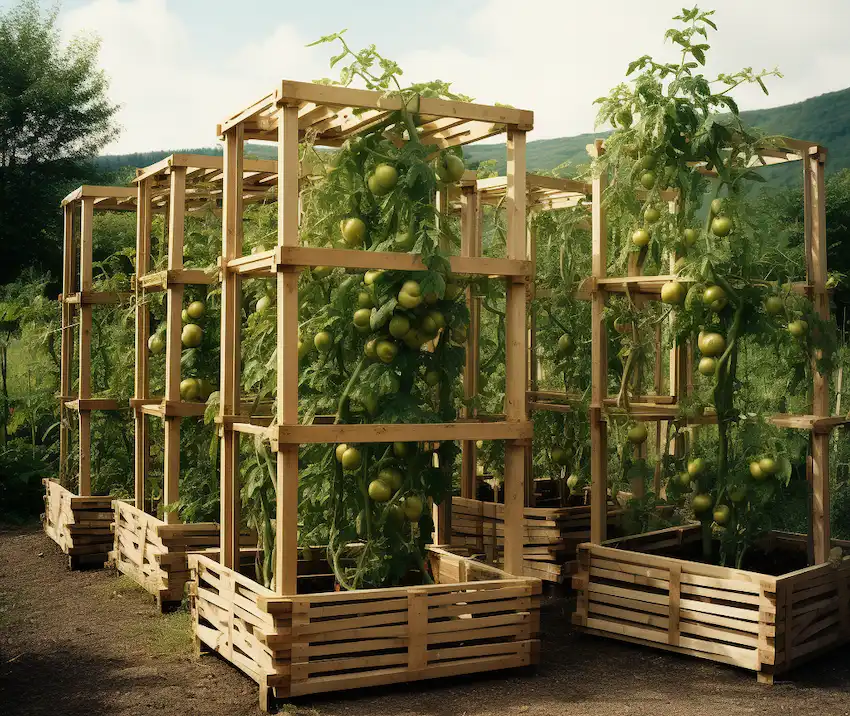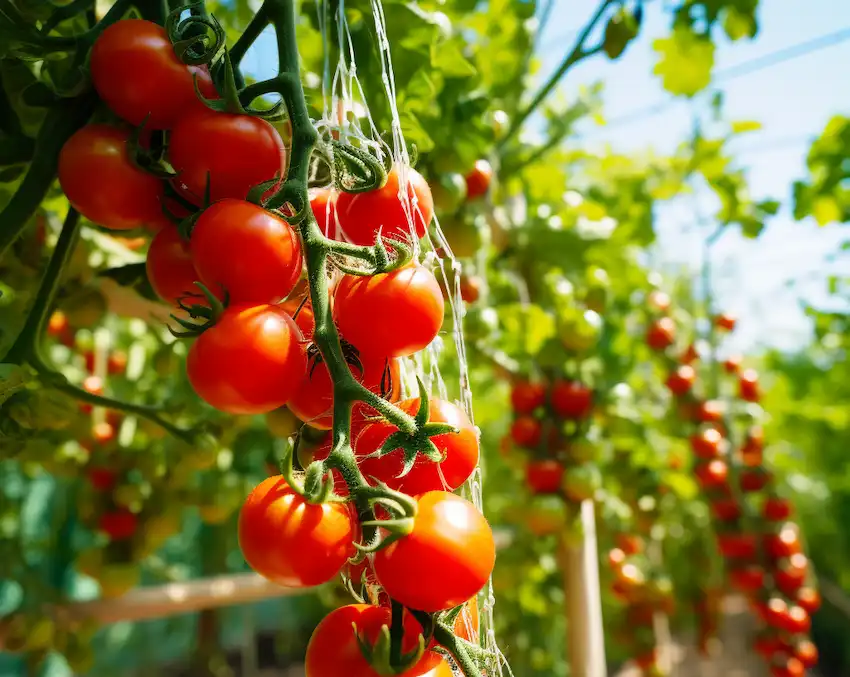Five Essential Techniques for Supporting and Training Your Tomato Plants
Growing tomatoes is a rewarding experience for any gardener, but as these plants grow, they often require support to ensure they remain healthy, produce more fruit, and are less susceptible to diseases. Supporting or training tomatoes can significantly improve air circulation, reduce pest issues, and make harvesting easier. Here are five effective ways to support or train your tomato plants, each with step-by-step instructions to guide you through the process.
1. Staking
Materials Needed:
- Sturdy stakes (at least 6 feet tall and 1 inch in diameter)
- Soft ties (cloth strips, twine, or specialized plant ties)
Steps:
- Install Stakes Early: Insert a stake about 4-6 inches away from the plant base to avoid damaging the roots. Push it at least 1 foot into the ground for stability.
- Tie the Plant: As the tomato plant grows, gently tie it to the stake at 8-12 inch intervals. Ensure the ties are loose enough to not cut into the plant as it grows.
2. Using Tomato Cages

Materials Needed:
- Tomato cages (Choose sturdy, wide cages that can support the plant’s mature size)
Steps:
- Place the Cage Early: Put the cage around the plant while it’s still young, pushing the cage deep enough into the soil to be stable.
- Guide the Plant: Occasionally, guide the branches through the cage’s openings as the plant grows, but mostly, the plant will grow to fill the cage on its own.
3. Trellising
Materials Needed:
- Trellis system (can be made from wood, metal, or sturdy string)
- Plant ties
Steps:
- Install the Trellis: Set up the trellis system next to your tomato row. If using strings, secure them from a high support down to the base near each plant.
- Tie the Plants: As with staking, gently tie the tomato plants to the trellis or strings, allowing enough slack for growth and ensuring even support for branches.
4. The Florida Weave
Materials Needed:
- Tall stakes (placed between every two plants)
- Strong twine or garden string
Steps:
- Stake Your Row: Insert stakes at the end of each tomato row and between every two plants.
- Weave the Twine: Starting at one end, tie the twine to the first stake at about 10 inches high, and weave it in front of one plant and behind the next, pulling it tight. When you reach the end of the row, loop around the last stake and weave back in the opposite pattern.
5. The String Method

Materials Needed:
- Overhead support (a frame or wire strung between posts)
- Strong garden string or twine
Steps:
- Secure String: Tie a loose loop of string around the base of each plant.
- Attach to Overhead Support: Run the other end of the string up to the overhead support and tie it off, ensuring it is tight and secure.
- Twist and Train: As the plant grows, gently twist it around the string, which will support its weight as it climbs.
Additional Tips
- Choose the method that best suits your garden space and the variety of tomatoes you are growing. Some methods work better for determinate (bush) types, while others are suited for indeterminate (vining) types.
- Regularly check and adjust ties and supports as the plants grow to prevent damage.
- Ensure good air circulation around the plants to minimize the risk of disease.
Supporting or training your tomatoes can seem like an extra step in the gardening process, but the benefits to plant health, fruit yield, and ease of harvest make it well worth the effort. Whether you choose staking, caging, trellising, the Florida weave, or the string method, your tomato plants will thrive with the added support.



















